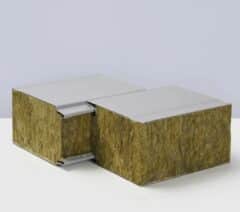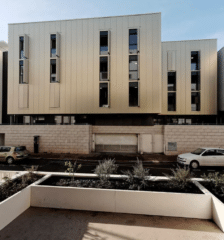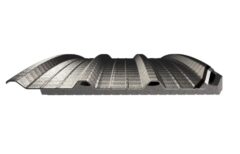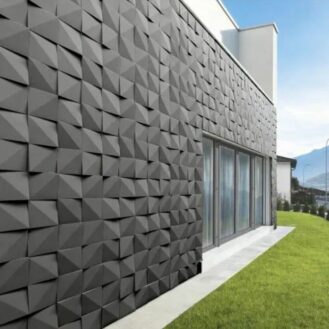
PROFHOLOD Mineral Wool Core Sandwich Panel
The core of a sandwich panel can significantly impact characteristics such as thermal insulation, acoustic performance, fire resistance, and strength. The core structure typically consists of foam, honeycomb, or corrugated materials. In contrast to foam sandwich panels, honeycomb core panels prioritize strength over insulation. The most common materials for honeycomb cores include aluminum, polypropylene, or cardboard. For insulating sandwich panels, the most common foam core types are as follows:
Polyurethane (PUR) core sandwich panels offer high initial thermal insulation but lack optimal fire resistance. The polyisocyanurate (PIR) core is a variation designed to improve this performance by providing better fire resistance, thermal insulation, and stability.
Phenolic foam (PF) sandwich panels, while more expensive than PIR insulation boards, offer slightly higher thermal and fire resistance.
Polystyrene sandwich panels are often more affordable than PUR or PIR variants but tend to provide lower thermal and fire resistance. Flame retardants may be added during production to ensure that they meet fire safety requirements. Polystyrene sandwich panels come in two forms: XPS (extruded polystyrene) or EPS (expanded polystyrene). XPS is denser, offers higher thermal resistance, and is also more moisture/vapor resistant compared to EPS.
Mineral wool core sandwich panels are known for their excellent fire resistance as mineral wool is non-combustible. Although they tend to be heavier and less thermally insulating than PIR, they excel in acoustic performance.











